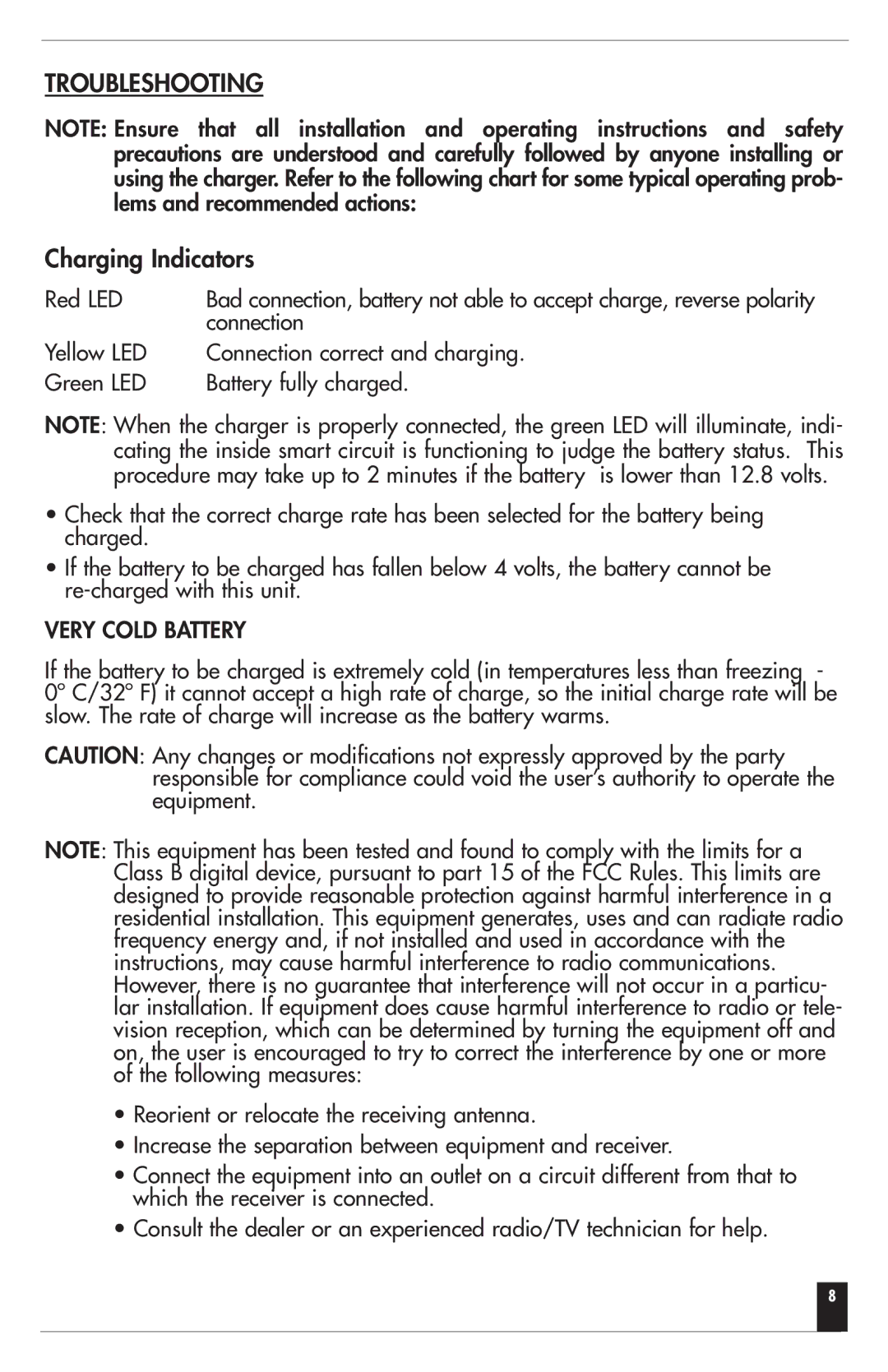
TROUBLESHOOTING
NOTE: Ensure that all installation and operating instructions and safety precautions are understood and carefully followed by anyone installing or using the charger. Refer to the following chart for some typical operating prob- lems and recommended actions:
Charging Indicators
Red LED | Bad connection, battery not able to accept charge, reverse polarity |
| connection |
Yellow LED | Connection correct and charging. |
Green LED | Battery fully charged. |
NOTE: When the charger is properly connected, the green LED will illuminate, indi- cating the inside smart circuit is functioning to judge the battery status. This procedure may take up to 2 minutes if the battery is lower than 12.8 volts.
•Check that the correct charge rate has been selected for the battery being charged.
•If the battery to be charged has fallen below 4 volts, the battery cannot be
VERY COLD BATTERY
If the battery to be charged is extremely cold (in temperatures less than freezing - 0º C/32º F) it cannot accept a high rate of charge, so the initial charge rate will be slow. The rate of charge will increase as the battery warms.
CAUTION: Any changes or modifications not expressly approved by the party responsible for compliance could void the user’s authority to operate the equipment.
NOTE: This equipment has been tested and found to comply with the limits for a Class B digital device, pursuant to part 15 of the FCC Rules. This limits are designed to provide reasonable protection against harmful interference in a residential installation. This equipment generates, uses and can radiate radio frequency energy and, if not installed and used in accordance with the instructions, may cause harmful interference to radio communications. However, there is no guarantee that interference will not occur in a particu- lar installation. If equipment does cause harmful interference to radio or tele- vision reception, which can be determined by turning the equipment off and on, the user is encouraged to try to correct the interference by one or more of the following measures:
•Reorient or relocate the receiving antenna.
•Increase the separation between equipment and receiver.
•Connect the equipment into an outlet on a circuit different from that to which the receiver is connected.
•Consult the dealer or an experienced radio/TV technician for help.
8
